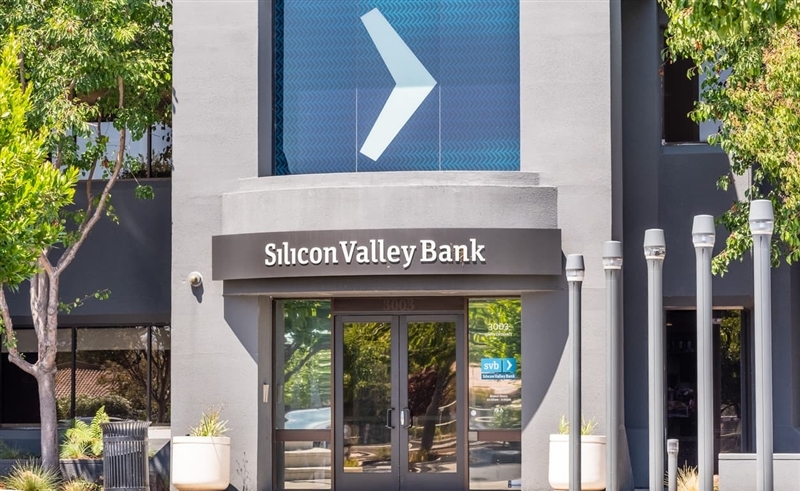Silicon Valley Bank and its Demise: What You Should Know

Silicon Valley Bank and its Concentrated Customer Base
First, it is important to understand a little bit about SVB and some of the characteristics that make it an outlier and uniquely exposed to a loss in customer confidence.
SVB was founded in 1983 and was the 16th largest bank in the country. It is the 2nd largest bank failure, behind Washington Mutual. The bank is headquartered in Santa Clara in the heart of Silicon Valley. Its customer base was primarily composed of businesses and executives in technology, life sciences/biotech, and private equity/venture capital. This concentrated customer base played a key role in its collapse because it was very exposed to the cyclical swings and boom/bust cycles that characterize the tech sector.
In the run-up to the pandemic, the tech sector boomed as yield-seeking investors sought opportunities in venture capital and private equity. The pandemic super-charged the boom, as tech profited from stay-at-home and work-from-home economic activity.
The Ups and Downs of the Tech Sector
On the other side of every boom, there is the Federal Reserve. This boom was no exception. The Fed began increasing interest rates in 2021 and poured cold water on the tech party. Tech companies continued to spend to support their operations, but the funding that was so plentiful at low rates slowed dramatically. This caused net cash withdrawals from SVB to exceed incoming deposits.
During this period of weakness in the tech sector, there was also growing concern about the health of SVB’s loan portfolio. Just as SVB soared during the boom, they suffered in the contraction on the other side.
Rising Rates and Tech Malaise
During the boom time, beginning in 2017, a new team at SVB began to invest “excess” deposits in long-dated mortgage-backed securities to seek extra yield during a time when the yield was hard to come by. Recall that the longer the maturity of the bond, the more the bond value falls when interest rates rise. Enter the Fed and inflation in late 2021. As interest rates rose, SVB’s long-dated bond portfolio accumulated unrealized losses.
Not only was SVB uniquely prone to a loss in customer confidence due to its tech-sector concentrated deposit base, but over 90% of its deposit base exceeded the threshold for FDIC insurance coverage. In short, its customers maintained high, uninsured account balances. On Thursday, March 9, well-known venture capitalist and SVB customer, Peter Thiel, grew concerned about SVB’s attempts to raise capital to replace fleeing deposits. He withdrew his deposits and instructed all the companies he invested in, which were also SVB customers, to withdraw their funds. Given the concentrated nature of the customer base, word spread virally on messaging apps like Telegram, and the bank failed on Friday.
Nationally, the median bank account size is just over $5,000 and the mean account size is just over $40,000, well below the FDIC insured limit. So, SVB was an outlier in this respect as well, and it contributed to a loss in customer confidence.
Longer-Term Effects on Banks, the Market and the Economy
To be sure, SVB is not alone. There will undoubtedly be more bank failures. Indeed, Signature Bank was taken over by the FDIC over the weekend. Broadly speaking, however, the risk of contagion is limited. The financial reforms enacted after the credit crisis in 2007 and 2008 were effective at decreasing risk and increasing resilience in the banking sector, and significant emergency measures have been taken over the weekend.
On Sunday night, March 12th, the FDIC announced that all SVB depositors would have access to all their deposits, even uninsured deposits, on Monday, March 13th. The same applies to customers of Signature Bank. This action will go a long way toward limiting banking sector risk and limiting deleterious short and long-term economic effects. In the absence of this action, many companies could have gone out of business that played no role in the failures of either bank. And many of these affected companies could be the next market leaders, the next Amazon, Google and Microsoft. These companies are crucial for the US to maintain global economic leadership.
It is important to note that restoring access to deposits for all customers is not a “bailout” of SVB. The stock price of SVB will go to zero. Executives and shareholders will enjoy no recovery. It is also important to note that SVB assets will be liquidated to reimburse taxpayers for providing advance access to all deposits. There could, however, be a shortfall. The best estimate I have heard is a 2% shortfall, but it is too early to know. The government has said that any shortfall will not be borne by the taxpayer. According to an announcement by the Treasury, any shortfall will be covered by a levy on the banking system. The reality, of course, is more complicated and this will be the nature of the debate that will continue for months and years.
A failure to act could well have resulted in a loss of confidence in the banking system, a financial crisis, a loss of jobs, and a lost generation of innovative technology companies. In short, the potential downside of inaction was significant.
Government Action
In addition to the FDIC providing SVB customers immediate access to all their deposits on Monday the 13th, and the Federal Reserve is launching the Bank Term Funding Program. The program will offer loans of up to one year to lenders that pledge collateral including US Treasuries and other qualifying assets, which will be valued at par. This means that even if a bank's bonds are worth less now because of rising interest rates, they do not need to sell them at a loss. The Fed will loan them funds up to the value of the bonds at maturity.
These measures will have a strong, confidence-building effect on the market and the economy. The ultimate cause of SVB’s collapse, an extremely rapid increase in interest rates, has not gone away. The Fed has committed to staying to course in its fight against inflation. The SVB and Signature Bank failures and the resulting impacts on confidence and risk-taking could cause the Fed to move more slowly with rate increases at the margin, but barring something more dramatic, the Fed will likely stay the course. The goal of the Fed is to cool inflation by reducing wage pressure and aggregate demand. As they pursue this objective, investors and business owners will need to remain vigilant as economic fragilities reveal themselves.
A Port in the Storm
Baker Boyer has weathered these types of economic storms before. Our business is built on the understanding that we only flourish if the communities we serve flourish. While the SVBs of the world may attempt to profit from the next big market cycle, Baker Boyer is planning for the next century. We enjoy a broadly diversified deposit base of small businesses and individuals, many of whom were introduced to us by their parents and grandparents.
Through crises and world wars, we apply prudence and responsibility in everything we do. Our doors are open, as they have been for over 150 years. If you or someone you know has been negatively affected by the recent crisis or are simply looking for safety and security, we welcome you to contact a member of our team.
If you have any questions about this article or your financial situation, we are here to help. If you are not already a client, please contact us at (509) 525-2000 for more information. Again, we would welcome a conversation with you.



